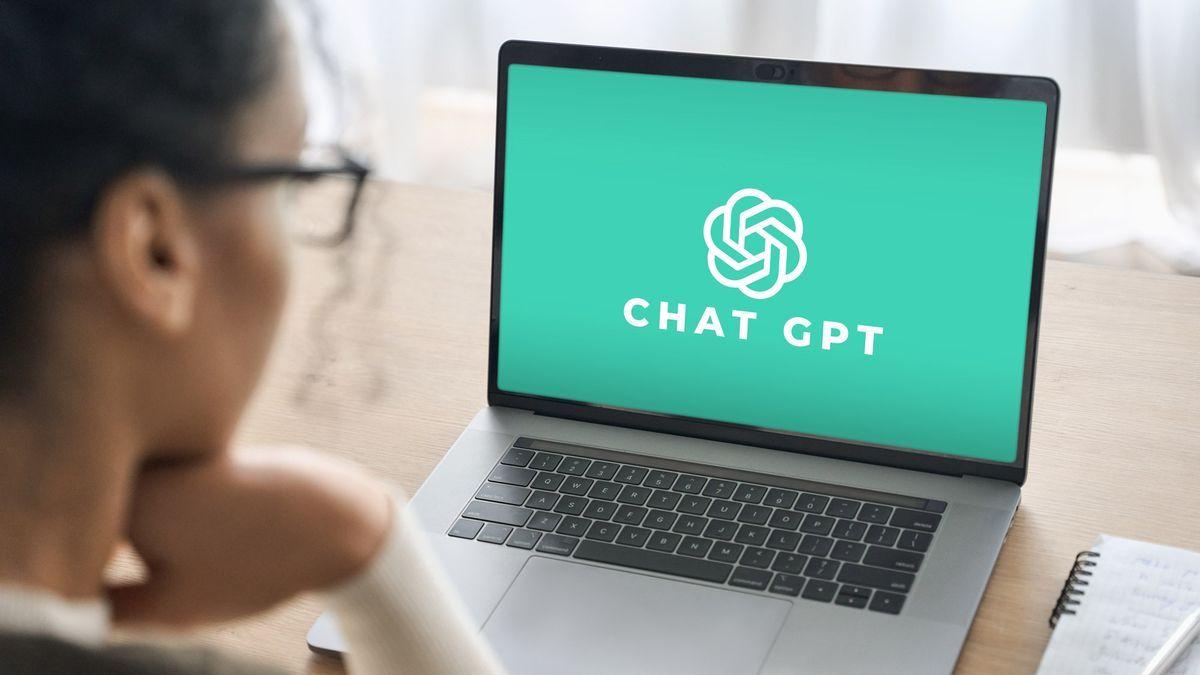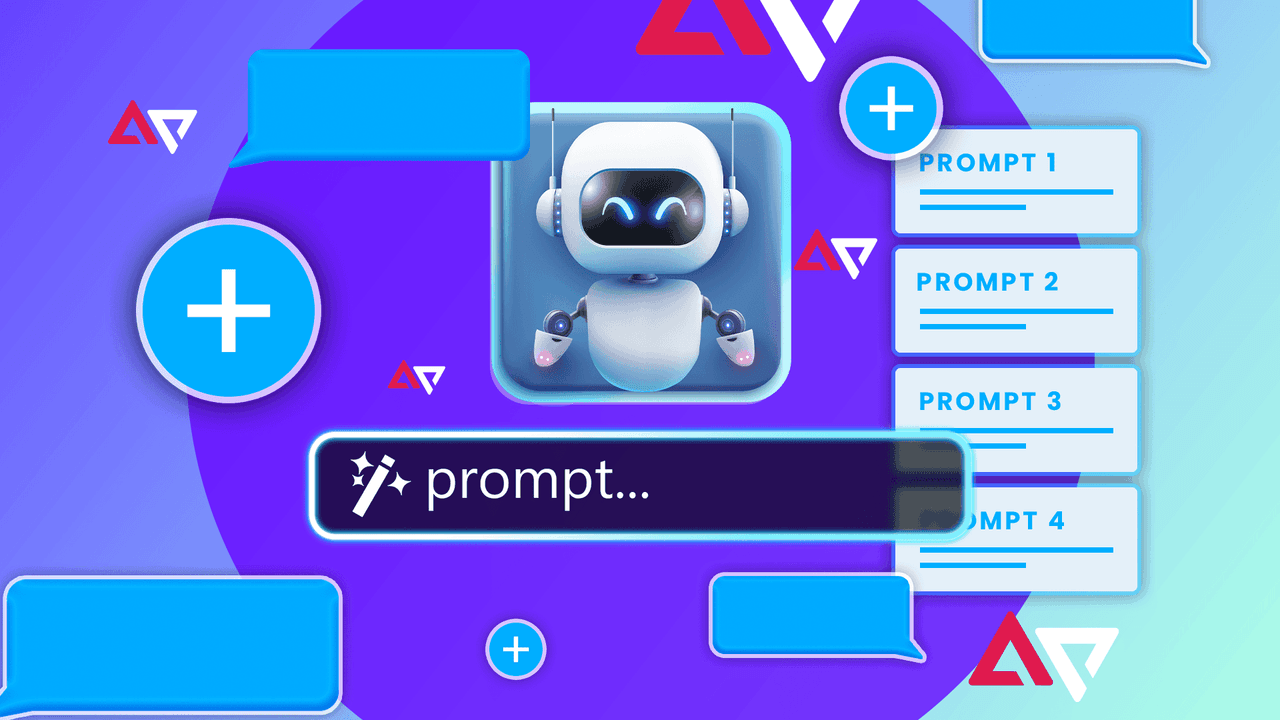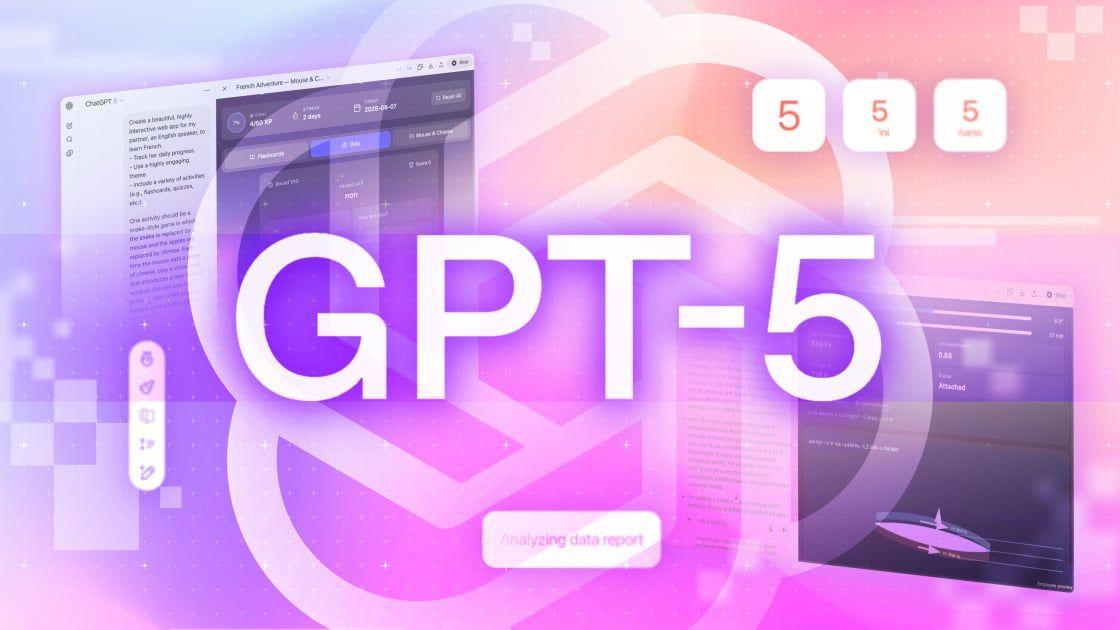The Evolution of ChatGPT: Mastering Prompt Engineering for Better AI Interactions
8 Sources
8 Sources
[1]
I write about AI for a living -- here's my top 5 ChatGPT prompt tips
Get more out ChatGPT and other AI models with these 5 game-changing prompting tips While using tools like ChatGPT doesn't involve rocket science, it does make you an engineer of sorts. Creating the perfect AI prompt is part art, part science -- it's about crafting creative yet logical inputs that get a chatbot to respond in a way that's actually useful to you. If you already have an understanding of how chatbots like ChatGPT work, you definitely have an edge when it comes to knowing how to phrase your prompts. Even if you don't have a technical background, you needn't worry. Treat ChatGPT as a creative partner and don't be afraid to think outside the box. A curious mindset -- along with a bit of trial and error -- can take you a long way. Here's 5 tried and tested tips to take your ChatGPT prompts to the next level. Prompt engineering is the process of writing clear and effective instructions for an AI model so that it consistently gives you the kind of results you want. Some universal principles still apply. Just like owning the best camera phone won't guarantee better photos than a pro with basic gear, paying for a premium chatbot doesn't automatically mean better results. The same goes for chatbots. Paying for a premium account of one of the best chatbots does give you access to the latest features, but knowing how to use it properly is what turns your results from good to great. That means understanding how the AI interprets language and choosing the right wording, context, or examples to guide its responses. What does this look like in practice? Following these steps turns the simple prompt "explain how tariffs work" into the prompt below. "You're the CEO of a tech company explaining how tariffs work during a TV interview. Explain how tariffs work to an audience that is hearing about tariffs for the first time. Deliver your explanation in a conversational style. Provide an example of how tariffs can yield a positive result and another example showing their consequences." Now that you've learned my 5 top prompting tips, why not take a look at some of our other AI articles? Check out I use ChatGPT every day -- here's 9 prompts I can't live without and 11 prompting tips to get better results. And you can even use ChatGPT to build the perfect spring cleaning schedule.
[2]
The #1 mistake people make when using ChatGPT -- and how to fix it
It's no secret that ChatGPT is one of the most powerful anad popular AI tools available today. With OpenAI releasing new models and exciting updates regularly and a reported nearly 800 million weekly active users and around 122.58 million daily users, you're probably one of the many who has integrated the AI tool into your daily routines. Even if you're a casual user who has tried to the chatbot to plan a meal or write a cover letter, you may have felt like the chatbot is delivering answers that are too generic or just don't hit the mark. You're not alone. There's one common misstep that's tripping up users across the board -- and it's easier to fix than you might think. There are several mistakes ChatGPT users make when using the chatbot, but the number one mistake is asking vague, overly broad questions. For example, prompts like, "Tell me about marketing" might seem like a good starting point, but the query will only leave you with surface-level answers that don't offer much value. Here's the thing to remember: Chatbots are only as good as their users allow them to be. ChatGPT works best when it has something specific to latch onto. As a prompt engineer, I have seen my fair share of fantastic prompts and absolutly terrible ones. Here's a few examples of everyday prompts and how small tweaks gives the AI a role to play with a clear task. It makes all the difference. Bad Prompt: "How can I be more productive?" Better Prompt: "Act as a productivity coach. Give me a 3-step morning routine I can follow to stay focused all day -- ideally something I can complete in under 30 minutes." Bad Prompt: "Help me get a better job." Better Prompt: "Act as a career counselor. Suggest three career paths for someone with 5 years of marketing experience, strong writing skills, and a passion for tech startups." Bad Prompt: "What should I post on TikTok?" Better Prompt: "You're a TikTok strategist for Gen Z beauty brands. Suggest 5 trending TikTok video ideas for a cruelty-free skincare brand targeting college students." Bad Prompt: "How do I reduce stress?" Better Prompt: "Act as a mindfulness teacher. Give me a short daily routine I can do in 10 minutes or less to reduce stress during my workday." Bad Prompt: "What can I make for dinner?" Better Prompt: "You're a chef. Suggest three easy dinner recipes using only chicken, spinach, garlic, and pasta -- and make sure they can be cooked in under 30 minutes." Bad Prompt: "What should I do in Italy?" Better Prompt: "Pretend you're a luxury travel planner. Create a 3-day itinerary for a couple visiting Florence for the first time -- include must-see sights, food recommendations, and one romantic evening activity." Bad Prompt: "How do I save money?" Better Prompt: "Act as a personal finance coach. What are 5 realistic ways a family of four can cut monthly expenses without sacrificing quality of life?" Want more helpful, relevant results from ChatGPT? Use these five tips: Even with the perfect prompt, ChatGPT can sometimes get things wrong. It may "hallucinate" -- meaning it might present inaccurate or made-up information as fact. So if you're relying on the AI for anything important, especially research or stats, it's always smart to double-check with a trusted source. If you want ChatGPT to work smarter for you, start by being more specific. The clearer and more focused your prompt, the better the response will be.
[3]
5 tips to get the most out of ChatGPT's new 4.1 model
OpenAI's latest tips show how to prompt ChatGPT 4.1 for smarter replies, clearer logic, and more consistent performance. This latest API iteration from OpenAI demands greater precision, clearer structure, and more explicit instructions. Built to handle complex conversations and file processing with unprecedented capability, ChatGPT 4.1 actually requires more human guidance to deliver its best work. Remember when vague, casual prompts somehow produced decent results? Those days have vanished. Now, without clear direction on both content and presentation, you'll likely face disappointing responses or outright confusion. Thankfully, OpenAI hasn't left us guessing -- it has published specific guidelines for mastering this new model. Here's how to switch up your prompting approach for ChatGPT 4.1 to achieve far better results. The ChatGPT-4.1 API is an API-only offering from OpenAI, designed to deliver improved performance over previous versions. It supports a context window of up to 1 million tokens, allowing it to handle and generate large amounts of text, code, and structured data. Now that you've learned how to prompt better in ChatGPT 4.1 according to Open AI, why not take a look at some of our other AI articles? Check out I use ChatGPT every day -- here's 9 prompts I can't live without and 11 prompting tips to get better results. And you can even use ChatGPT to build the perfect spring cleaning schedule.
[4]
I test ChatGPT for a living -- 7 secrets to instantly up your prompt game
If you've ever typed a question into ChatGPT and thought, "Huh. That's not exactly what I wanted..." don't worry, you're not alone. The truth is, most people are only scratching the surface of what AI chatbots can really do. But as someone who prompts AI professionally, I can tell you the difference between a good result and a great one often comes down to the way you ask. Below are some of the best-kept secrets that prompt engineers like myself use to unlock more helpful, creative, and accurate responses from ChatGPT and other chatbots. Known as role prompting, this technique works like a charm for things such as writing, brainstorming, or even asking for professional advice. By assigning the AI an identity or job title, you prime it to respond with more confidence, structure, and relevance. Instead of the prompt: "Tell me about marketing." Try this prompt: "You are a world-class marketing strategist. What are three clever ways a small business could grow on TikTok?" By applying this technique to your queries, you will unlock greater potential within the chatbot to uncover better responses and more thorough answers. This is called chain-of-thought prompting, and it's especially powerful for multi-step tasks, logic puzzles, and tricky queries that require reasoning. You'll often get more thorough -- and more accurate -- results by using a more sophisticated prompt because ChatGPT tends to give better answers when you guide its thinking process. By adding rules and context, you give the model boundaries to work within, which helps it stay focused. It's like telling a designer your brand colors instead of saying, "make something cool." I have found that this trick is one that many casual users tend to break. They simply are not detailed enough with their request. Just remember, the more specific your query, the better the output. Instead of the prompt: "I need three subject lines for a Mother's Day sale" Try this prompt: "Give me three subject lines for a Mother's Day sale -- keep them under 50 characters and use playful language." If you've ever dumped a wall of text into ChatGPT, you know that it doesn't exactly mean good results. In many cases, the chatbot might hallucinate because of information overload. That's why I always break it up. Prompt engineers guide the AI step by step like this: This gives you more control over the tone, accuracy, and final format and it makes the process feel more collaborative. If you want a specific tone or vibe, show the model what you're looking for. This is especially helpful with image generation. Known as few-shot prompting, when given extra context with an example, the AI will usually mirror the structure, tone, and rhythm surprisingly well. Even without additional instructions, you'll find that the chatbot responds well. For example: "Write a product description like this one: 'These boots are made for adventure. Built tough, but cozy enough for your lazy Sunday scrolls.' Now write one for a travel backpack." As a prompt engineer, I often treat prompting like debugging code. The first result is rarely perfect. However, even a tiny change, such as adjusting the role or tone can completely transform the output. As a prompt engineer, my work typically looks like this: * Run the prompt * See what went wrong * Change one variable * Try again Sometimes ChatGPT nails the content but totally misses the tone. That's because it doesn't know how you want it to sound -- unless you say so. A simple fix? Just add a line about tone or style to your prompt. Instead of the prompt: "Write a thank-you note." Try this prompt: "Write a thank-you note that's warm and funny, like something you'd text a close friend." Want it to sound confident, professional, casual, flirty, dramatic, Gen Z, like Shakespeare? Just say the word. The more you tell it about the vibe you're going for, the better your chances of getting the exact tone you want. This also goes for if you're working with ChatGPT Pro tools or in the Playground, you can set a system message at the beginning of your session: "You are a professional copywriter who writes with humor and clarity for a Gen Z audience." That tone will stick through the whole session, keeping the responses consistent and on-brand. Prompt engineering is not magic; it's science that explores thoughtful communication. The better your input, the better the output. Of course, it doesn't hurt to say 'please' and 'thank you' either. And with tools like ChatGPT getting smarter by the day, learning how to "talk AI" might just be the new digital literacy that makes the chatbot work even better for you. Give these techniques a try next time you fire up ChatGPT and you might be surprised by what it can do. Let me know in the comments how they work for you!
[5]
I've been using ChatGPT for over 2 years -- these 5 prompts show how far it's come
ChatGPT launched in its original form over two years ago. Back then, despite its clearly impressive skills, it was a mess compared to what we have today. It was confused, limited, and quite frankly, a little bit messy. However, times have changed, and so has the technology that powers AI. ChatGPT, and its chatbot competitors have come so far. In fact, other than the occasional slip up, it often feels like these models can do pretty much anything. So with that in mind, two years after I first used ChatGPT, I tried it on some of the prompts it used to have a hard time with. This is how it went. This is an area where ChatGPT has seen huge improvements, mostly led by the introduction of the model searching the internet for answers. Back in its original format, ChatGPT wouldn't be able to handle information that had occurred in the last year. This would include changes in world leaders, breaking news, and new product releases. That has all changed and now the model can handle even highly localised real-time requests. If asked a prompt about recent world news, it will search the web, coming back with a near-up-to-the-minute response. While it can still get these details wrong, or choose to not answer, it handles these requests the vast majority of the time. I asked it questions, local, national and worldwide in nature, that had occurred in the past couple of days with ChatGPT knowing the correct answer in most instances. This can still trap most AI models, but the technology has come a long way in recent months. Multi-step logic is the idea that a chatbot has to take a number of steps in a given prompt to reach the answer. For example: Write an in-depth feature article on the rise of independent bookstores in urban areas of America between the years of 2000 - 2025. Organize the feature into sections, writing it in AP style, and include direct quotes with the correct attributions. This kind of prompt requires the model to embark on a series of tasks, often completing them in an order to generate the end result. This, in the past, could cause ChatGPT to have a bit of a meltdown, or huge chunks of the information you asked for would be missing or incorrect. I fed the above prompt into ChatGPT and received a feature on that exact topic. After some research, I could confirm that all of the information was correct, and even the quotes used were too. It is still possible to trip up an AI on this kind of prompt, especially if the number of steps starts to become unmanageable. However, with the use of deep research tools and more complex AI tools, multi-step processes are starting to become a breeze for them. Granted, this is hard enough for humans, but technically impossible for AI. While ChatGPT and its competitors can mimic creative output, learning from books, artwork, and music, they can't create something completely new. However, it does a much better job at it than it has in the past. For example, in ChatGPT's early days, I asked it to write a book synopsis for a sci-fi film that is completely unique and not similar to anything already out there. After trying this a few times, I'd had vague rip-offs of Star Wars, Fallout, and a variety of other clear tropes. When asking this kind of prompt now, it will still follow tropes and almost always start with "In the year" with a very distant year to show its futuristic. However, it will generally create something interesting, unique, and unlike an existing creation. The same can be seen in image prompts, moving away from noticeable artwork styles and creating poetry that isn't just vague attempts at a rhyming story. AI models are still painfully bad at comedy, though... Maybe that will come one day. AI models don't have senses, but they have learned about the experience of human touch and sense. If you asked ChatGPT questions like: What is your favorite smell? Or what is the best type of pasta? It would usually reply that it couldn't answer those questions. This makes sense; it can't smell, and it isn't able to have personal opinions about rankings. It would also struggle with the sense of self if asked questions. For example, ask ChatGPT now a question like using only the descriptions of your senses, describe how to tie a knot, It would be able to do it, describing the experience from its own perspective. In past versions, it would have struggled with this kind of command. We've all fallen for those common-sense questions that look to trip you up. Think along the lines of: what weighs more, 1 kilogram of feathers or 1 kilogram of bricks? The answer is technically obvious, but your brain can catch you out. For a long time, the same was seen in AI models. In its early days, ChatGPT could be easily tricked with an odd phrasing or a puzzle that required some logical processing to tackle. This is often because, despite it being an easy question, it requires specific knowledge. For example, if I asked you, "I have a normal colander in my kitchen. If I fill it completely with water, how much will be left by the time I get to the sink?" you would know that water would leak out of a colander so there would be none left. AI models, on the other hand, would focus on the process. You haven't mentioned dropping any water or discarding any, so you must still have all of the water left. Now, it can answer these kind of questions with ease, often even pointing out that you are trying to trick it.
[6]
I used these 5 prompts to see what ChatGPT knows about me -- and I'm surprised
Is ChatGPT noticing something about you that you haven't yet? These prompts will fish it out While companies like Google and Meta have long been collecting our personal data, we now live in a world where we actively feed information to AI models. On the one hand, it's worth thinking about what you're comfortable sharing with tools like ChatGPT. But long, thoughtful chats with an AI might also surface things about you that you haven't even noticed. Some ways in which you can start to dig deeper include asking ChatGPT to profile you, to generate AI images based on what it knows about you, or even come up with a fun nickname for yourself. You can start digging by asking ChatGPT to profile you, create AI images based on it's "knowledge", or even come up with a fun nickname. I wanted to see what ChatGPT had picked up about me -- and whether it could spot any habits, mistakes, or patterns I hadn't clocked myself. These five prompts I used work best after you've enabled ChatGPT's memory setting so that it can start recalling your conversations. Once you're ready to find out what ChatGPT knows about you, try out these five prompts. Now you've learned what prompts to use to find out what ChatGPT knows about you, why not take a look at some of our other useful AI articles? Here's what happened when I replaced Photoshop with ChatGPT's new AI image generator and when I asked ChatGPT to become my exercise coach. And if you want to know how to use Google Gemini to declutter your Gmail account, we've got you covered.
[7]
5 tips to make your ChatGPT prompts work better - Softonic
Crafting the perfect ChatGPT prompt is not about being a programmer -- it's about being a smart communicator. By learning how to guide the AI properly, you can transform vague answers into powerful tools that help you write, create, and solve problems faster. These five practical tips will help you improve your prompts and get the most out of ChatGPT. Don't settle for the first version of your prompt. Instead, talk to the AI about your goals and ask it to help you rewrite or refine your original idea. It's often easier to edit a generated prompt than to start from scratch. Not all models are built the same. Some are better at logic, others at creativity or speed. If you're not getting great results, try switching to a different version of ChatGPT or testing your prompt across available models. Context changes everything. Assign a role to the chatbot, define your audience, and state your objective clearly. The more relevant details you include, the more accurate and useful the response will be. If you want a specific format or style, give the AI at least one or two solid examples. This approach dramatically increases your chances of receiving content that meets your expectations. AI is constantly evolving. If a prompt fails today, it might succeed in a few months. In the meantime, tweak and test different versions, and treat the process as an ongoing collaboration with the AI.
[8]
With these 5 prompts you can know what ChatGPT knows about you - Softonic
Discover how to explore what ChatGPT knows about you with five simple prompts that reveal insights about your personality, interests, and communication style. Understanding how much ChatGPT knows about you can be both fascinating and enlightening. By using a few well-crafted prompts, you can uncover the extent of the information that the AI model gathers during interactions. Although ChatGPT does not retain personal data between conversations unless integrated into systems that allow it, it can still reflect patterns based on your input. One effective way to start is by asking ChatGPT to summarize your conversation history within a single session. This can reveal how the AI interprets your interests, tone, and preferences based on previous exchanges. Another valuable prompt is: "Based on this chat, what can you infer about my personality?" This question encourages the AI to synthesize data points it has noticed during the current interaction, offering a unique mirror into how you may appear. You can also ask ChatGPT what your main interests seem to be. This often highlights how specific or broad your conversation topics have been and can help you adjust how you engage with AI for better results. A fourth helpful prompt is: "If you had to guess my profession or hobbies, what would you say?" This encourages ChatGPT to analyze your communication style, vocabulary, and subject matter focus. Finally, asking "What writing style do I seem to prefer?" can reveal whether you lean towards casual, formal, concise, or elaborate forms of communication, giving you useful insights for personal or professional improvement. Through these prompts, you can better understand your interaction patterns and how AI perceives your digital persona.
Share
Share
Copy Link
A comprehensive look at how ChatGPT has improved over the past two years, focusing on prompt engineering techniques and the AI's enhanced capabilities in handling complex queries.

The Rise of Prompt Engineering in AI Interactions
As artificial intelligence tools like ChatGPT continue to evolve, the art of crafting effective prompts has become increasingly crucial. Over the past two years, ChatGPT has made significant strides in its capabilities, demanding more sophisticated interaction techniques from users
1
4
.Key Improvements in ChatGPT's Capabilities
ChatGPT has shown remarkable progress in several areas:
-
Real-time Information Processing: The AI can now handle queries about recent events and breaking news, a significant improvement from its earlier versions
5
. -
Multi-step Logic: ChatGPT has become adept at managing complex, multi-step prompts, producing more coherent and accurate responses
5
. -
Creative Output: While still bound by existing knowledge, ChatGPT has improved in generating more unique and creative content
5
. -
Sensory and Self-awareness: The AI can now better simulate human sensory experiences and demonstrate a form of self-awareness in its responses
5
. -
Common Sense Reasoning: ChatGPT has become more proficient at handling tricky questions that require logical processing
5
.
Essential Prompt Engineering Techniques
To maximize ChatGPT's potential, users should employ several key strategies:
-
Role Assignment: Giving ChatGPT a specific role or identity can lead to more focused and relevant responses
4
. -
Chain-of-Thought Prompting: Guiding the AI's thinking process often results in more thorough and accurate outputs
4
. -
Specific Instructions: Providing clear, detailed guidelines helps ChatGPT deliver more precise and tailored responses
2
4
. -
Iterative Refinement: Treating prompts like debugging code, with continuous adjustments, can significantly improve results
4
. -
Tone Specification: Explicitly stating the desired tone or style can ensure more appropriate and consistent responses
4
.
The Importance of Precision in Prompts
The latest iterations of ChatGPT, particularly version 4.1, require more precise and structured prompts to deliver optimal results. Users are encouraged to provide clearer direction on both content and presentation to avoid confusion or disappointing responses
3
.Related Stories
Avoiding Common Mistakes
One of the most frequent errors users make is asking vague or overly broad questions. To get the most out of ChatGPT, it's crucial to be specific and provide context. For instance, instead of asking "How can I be more productive?", a better approach would be "Act as a productivity coach. Give me a 3-step morning routine I can follow to stay focused all day -- ideally something I can complete in under 30 minutes"
2
.The Future of AI Interaction
As AI tools continue to advance, the ability to effectively communicate with these systems is becoming a new form of digital literacy. Understanding how to craft prompts that elicit the best responses from AI is increasingly valuable in various professional and personal contexts
4
.By mastering these prompt engineering techniques, users can unlock ChatGPT's full potential, leading to more productive and insightful AI-assisted experiences across a wide range of applications.
References
Summarized by
Navi
[3]
Related Stories
Recent Highlights
1
Meta acquires Manus for $2 billion, adding revenue-generating AI agents to its platforms
Business and Economy

2
Nvidia locks in $20 billion Groq deal, securing AI chip rival's technology and talent
Business and Economy

3
Geoffrey Hinton warns AI job replacement will accelerate in 2026 as systems gain new capabilities
Technology








